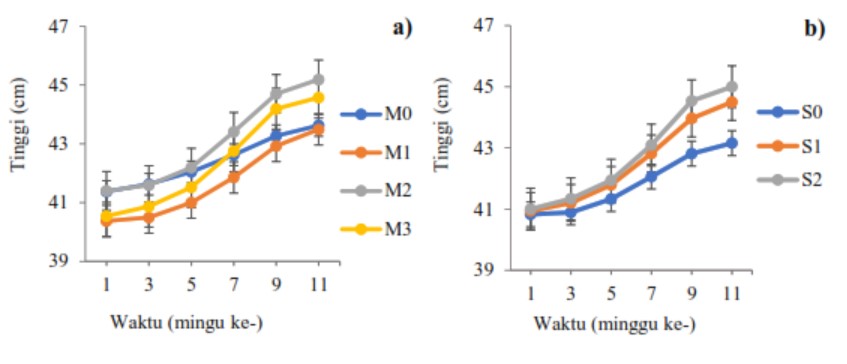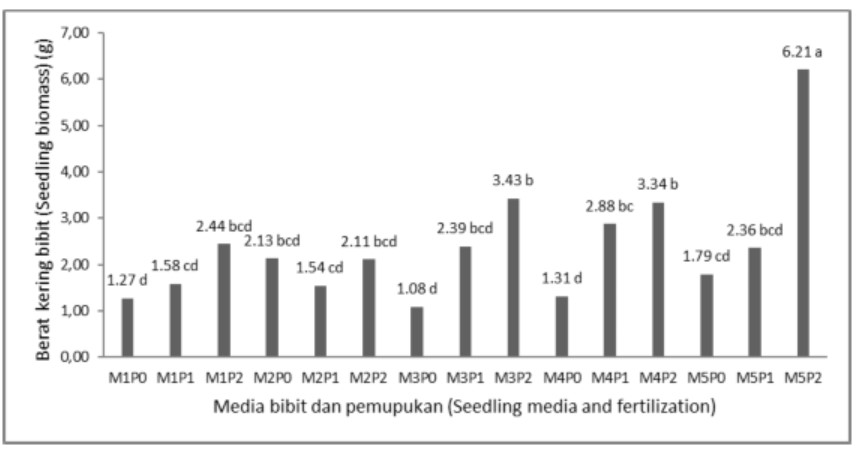Effect of Compost Dosing on the Growth of Nyatoh (Palaquium sp) Seedlings in the Nursery
Abstract
The growth of Nyatoh (Palaquim sp) seedlings is very slow so they need to be given treatment to speed up their growth in the field. Nyatoh (Palaquim sp) seeds are endemic to South Sulawesi and make good quality wood for house building materials. This research aims to determine and analyze the interaction of giving compost fertilizer on the growth of Nyatoh (Palaquium sp) seedlings in the nursery, as well as knowing and analyzing the appropriate dosage according to the growth needs of Nyatoh (Palaquium spp) seedlings in the nursery. The research method used was an experimental method with 3 repetitions. Nyatoh seeds which are available in the form of polybags are approximately 2 months old in the nursery, then seeds with a uniform height of around 15 cm are selected for a total of 90 seedlings. Next, compost fertilizer is prepared from fermented cow dung, then weighed at a dose of 30 gr/seed coded (P1), 40 gr/seed (P2), and 50 gr/seed (P3). Initial growth measurements (first week) were carried out when the seeds were mixed with compost for each Nyatoh seedling. Then the next measurement was carried out in the 4th week (final measurement) on 90 Nyatoh seedlings in the nursery.The results of the research showed that the interaction of giving compost fertilizer to Nyatoh seedlings had a very significant effect on the increase in height and number of leaves of Nyatoh seedlings in the nursery, with a calculated F value of 14,955 > F table value of 4,459 and F calculated 12,043 > 4,459. The treatment of providing compost fertilizer at a dose of 40 gr/seed (P2) had a very significant effect on the increase in height and increase in the number of leaves of Nyatoh seedlings in the nursery.
Copyright (c) 2024 Jurnal Wasian

This work is licensed under a Creative Commons Attribution-NonCommercial 4.0 International License.
Copyright and License
All articles published in Wasian Journal are the property of the authors. By submitting an article to Wasian Journal, authors agree to the following terms:
-
Copyright Ownership: The author(s) retain copyright and full publishing rights without restrictions. Authors grant the journal the right to publish the work first and to distribute it as open access under a Creative Commons Attribution 4.0 International License (CC BY 4.0).
-
Licensing: Articles published in Wasian Journal are licensed under a Creative Commons Attribution 4.0 International License (CC BY 4.0). This license allows others to share, copy, and redistribute the material in any medium or format, and adapt, remix, transform, and build upon the material for any purpose, even commercially, provided that proper credit is given to the original author(s) and the source of the material

This work is licensed under a Creative Commons Attribution 4.0 International License. -
Author's Rights: Authors are permitted and encouraged to post their work online (e.g., in institutional repositories or on their website) prior to and during the submission process, as it can lead to productive exchanges and greater citation of published work.
-
Third-Party Content: If your article contains material (e.g., images, tables, or figures) for which you do not hold copyright, you must obtain permission from the copyright holder to use the material in your article. This permission must include the right for you to grant the journal the rights described above.
-
Reprints and Distribution: Authors have the right to distribute the final published version of their work (e.g., post it to an institutional repository or publish it in a book), provided that the original publication in Wasian Journal is acknowledged.
For the reader you are free to:
- Share — copy and redistribute the material in any medium or format for any purpose, even commercially.
- Adapt — remix, transform, and build upon the material for any purpose, even commercially.
- The licensor cannot revoke these freedoms as long as you follow the license terms.
Under the following terms:
- Attribution — You must give appropriate credit , provide a link to the license, and indicate if changes were made . You may do so in any reasonable manner, but not in any way that suggests the licensor endorses you or your use.
- No additional restrictions — You may not apply legal terms or technological measures that legally restrict others from doing anything the license permits.
Notices:
You do not have to comply with the license for elements of the material in the public domain or where your use is permitted by an applicable exception or limitation .
No warranties are given. The license may not give you all of the permissions necessary for your intended use. For example, other rights such as publicity, privacy, or moral rightsmay limit how you use the material.
Most read articles by the same author(s)
- Asikin Muchtar, Nirwana Nirwana, Wahyullah Wahyullah, Mahmud Mahmud, Ummu Kultsum, Analysis of the Success and Vigour of Cashew Seedlings Through Direct Seed Planting (Anacardium occidentale L.) for Sustainable Land Management , Jurnal Wasian: Vol. 11 No. 2 (2024): December











